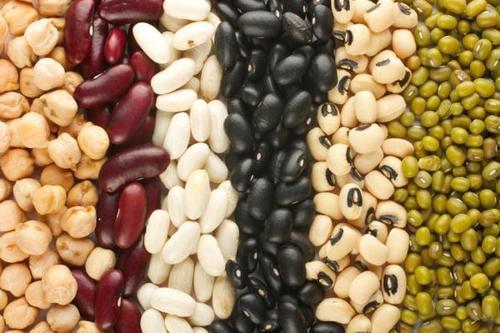Perhaps you’ve heard legumes are good for you.
Or, maybe you’ve even been told by a paleo promoter that they’re to be avoided.
Either way, today I’m going to cover your queries on “what are legumes,” and reveal whether they are they something you should go out of your way to add to your diet.
What are legumes?
There are actually two types of legumes, mature and immature.
Mature legumes are the dried seeds found inside pods, for example kidney beans or chickpeas.
Immature legumes are those that have been harvested before they mature, such as green beans and garden peas.
Some of the most common legumes include alfalfa, clover, peas, beans, lentils, lupins, and peanuts (a peanut is a legume whose pod does not split open on its own).
Why should you eat legumes?
Here are just a few reasons:
- Excellent source of protein
- Good source fiber (approximately 15 g/cup)
- Most varieties provide half our folate requirements
- A good source of phosphorus, potassium, iron, zinc, calcium, and selenium
- Contain Thiamin (B1), Riboflavin (B2), Niacin (B3), B5 and B6
- Rich in antioxidants
- Low Glycemic Index
What counts as a serving?
A serving is 3 heaped tablespoons of beans.
Remember, beans and pulses count as a serving of your daily vegetable requirements, but only as 1 portion, no matter how many you eat.
Interesting facts about legumes
Below are a list of the nutrient highlights from some of the more commonly consumed bean varieties,
Red beansTop antioxidant bean containing more antioxidants than blueberries when compared gram-per-gram. Reds are also the top bean source of iron.
Kidney beans
Second ranking antioxidant bean on the USDA’s list, and are also a top fiber source.
Second ranking antioxidant bean on the USDA’s list, and are also a top fiber source.
Black-eyed beans
These beans contain more calcium than any other bean, as well as being a source of folate and magnesium.
These beans contain more calcium than any other bean, as well as being a source of folate and magnesium.
Black beans
In addition to ranking among the best antioxidant bean sources, black beans are the top bean source of magnesium.
In addition to ranking among the best antioxidant bean sources, black beans are the top bean source of magnesium.
Pinto beans
The top bean source of selenium, they are also ranked higher than the blueberry in their antioxidant power.
The top bean source of selenium, they are also ranked higher than the blueberry in their antioxidant power.
Now that you know what legumes are, how do you eat more when you’re not in the habit of it?
How to eat more legumes
- Choose beans as your protein source once or twice each week.
- Change your favorite recipe by replacing half of the meat with legumes.
- Stock your pantry with a variety of canned legumes for a quick meal, or side dish.
- Prepare soups, stews and casseroles with added beans.
- Try a new legume each week – most supermarkets stock a wide variety of both dried and canned.
- Vary your lunches with a bean soup, or salad, instead of your normal sandwich.
- Use pureed beans as the basis for dips and spreads.
- Snack on a handful of soy nuts rather than crisps or chocolate.
Hope you find this helpful and informative! Do you include legumes into your diet? Let me know!
Source
http://dietrebel.com/what-are-legumes/




thank you for your interesting infomation.
ReplyDeletehttps://www.dietsinreview.com/